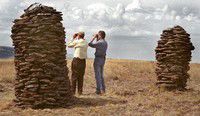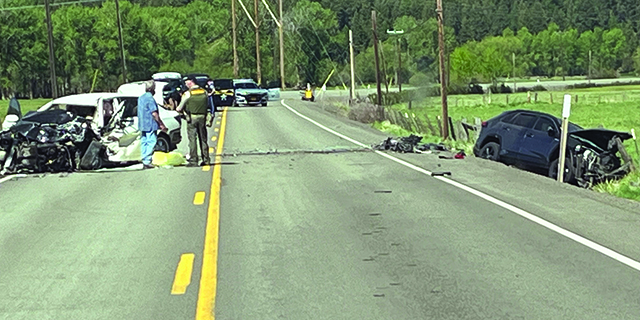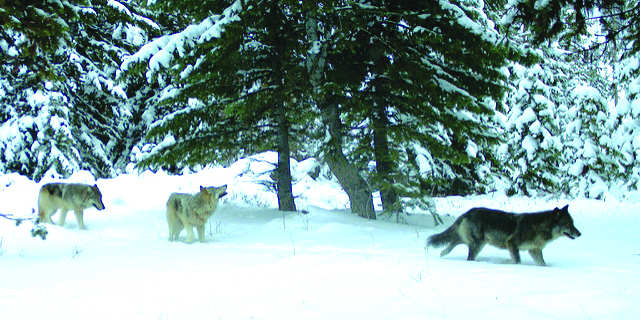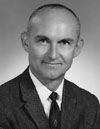Zumwalt Prairie: A place of subtle beauty
Published 5:00 pm Wednesday, September 4, 2002

- Paul Lamberger (left) and Phil Shephard scan the horizon while standing next to one of two stone monuments piled on high ground on the Zumwalt Preserve. Shephard guesses that the monuments were built by sheepherders in the 1880s or 1890s. Photo by Rocky Wilson
Beauty is in the eye of the beholder. And it can be contagious.
That is what can happen when one goes on a tour of the Zumwalt Prairie Preserve with the Nature Conservancy’s Northeast Oregon stewardship director Phil Shephard.
What seems like dull, grassy landscape comes alive as Shephard’s keen eye for detail denotes varying species of grasses and spots dozens of the birds of prey that set the prairie area apart from nearly any prairie in the North American hemisphere. Most other prairies are plowed and not the home of nesting raptors.
“We definitely want the property to be an asset to the county,” says Shephard of the 27,000 acre piece of land purchased for $11.7 million from the partnership of Bruce Hampton and Tom Suerez in October of 2000. Maps are available to persons wishing to visit the preserve on their own at any time except rifle hunting season, plus Shehard is willing to give tours of the property.
The Zumwalt Prairie Preserve located about 20 miles northeast of Enterprise is only a small part of the international Nature Conservancy which owns some 1,300 preserves throughout the country and employs some 3,000 people. It has holdings in all 50 U.S. states, controls one million acres and has one million members.
Almost touching down to the city of Imnaha, the Zumwalt Preserve measures some six miles by seven miles in size and includes deep canyons along Camp Creek and beyond.
But it is the nesting raptors on the prairie portion which drew the international agency to Wallowa County and, on a half day tour, four of us saw five of the 11 hawks and falcons which call the preserve home.
Most common were the kestrel, a small falcon, and the red tail hawk which seemed to sit atop every telephone pole as we had our collective vision adjusted for raptor watching on the way back in. We also saw the largest hawk on the preserve, the 56″ wingspan ferruginous hawk watching us on a nearby fence post and later on a telephone pole a few feet away. Shephard also pointed out a Swainson’s hawk and a Marsh hawk as our half day tour progressed.
While watching the large ferruginous hawk watching us from a fence post sixty feet away, avid bird watcher Carol Lamberger from Dayton, Ohio, said, “I don’t car how much we have to pay for the tour, I’ll pay it.”
She and her husband Paul already knew the tour was free of charge.
Not just a bird guide, Shephard took the time to point out the four major types of bunch grass located on the prairie: prairie june grass, Idaho fescue, bluebunch wheat grass and Sandberg’s bluegrass. He admitted that he did not know the name of some tiny white wildflowers growing on the bluff overlooking the Camp Creek divide, but studied them closely to determine if they were a cross pollinated variety.
Camp Creek on the Zumwalt Preserve, which was formerly known as the Camp Creek Ranch, had no visible water in it at the ranch site during the late August visit. Shephard said that seasonally there are waterfalls in the stream which is fed by springs further downstream. The depth of Camp Creek Canyon is spellbinding when one looks at the barren creek bottom below. He says the stream runs underground 2 1/2 miles before surfacing and becoming an important site of steelhead redds the last eight to nine miles it runs above ground and connects with Little Sheep Creek. He notes that steelhead reaching that spawning grounds have already gone through eight dams.
Part of the Nature Conservancy’s mission for the Wallowa County property is to inventory all plant and animal life. Plant life studies, with the aid of satellite imagery, are easier to compile. Color variations on a satellite image can often denote the prime source of plant life on a specific plot of land. Ground studies follow to fine tune the lessons learned from the satellite. Animal studies are much more difficult to assess because of the mobility of most species. More than once, however, Shephard did mention the Oregon Department of Fish & Wildlife studies on lower Camp Creek concerning steelhead reds and trout.
During the morning we saw several deer and a coyote, plus considerable sign of pocket gophers.
Shephard, a former manager of the Nature Conservancy’s Tensleep Preserve in Wyoming for 10 years, has many future plans for the Zumwalt Preserve. He is currently trying to obtain a $60,000 private foundation grant to fence off 16 50-acre study areas. The purpose of the fenced in areas would be to test grazing impacts on the prairie, especially the impact on wildlife.
One portion of the sale price of the property in 2000 was that the Conservancy would assume grazing rights extended to the Hubbard Ranch through 2005. Shephard says the relationship with the cattle outfit is friendly and beneficial to both parties.





